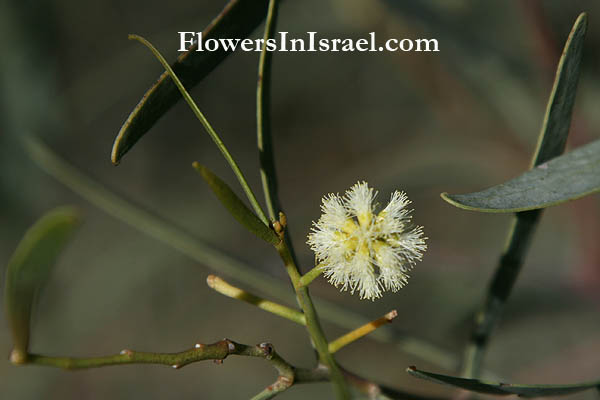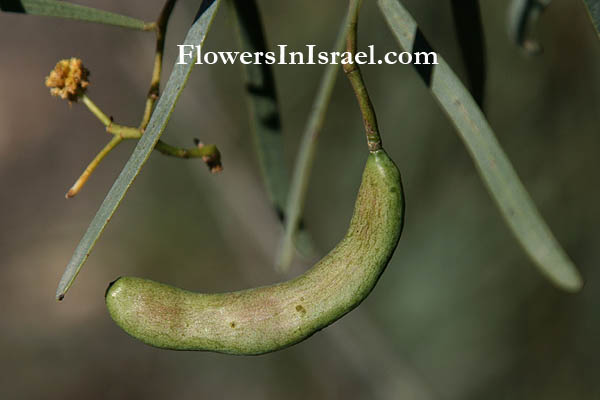Willow Acacia, Willow wattle, Australian Willow, Broughton Willow,
Hebrew: שיטה עלי-הערבה, Arabic: أكاسيا صفصافية الأوراق
| Scientific name: | Acacia salicina Lindl. | |
| Synonym name: | Racosperma salicinum (Lindl.) Pedley | |
| English name: | Willow Acacia, Willow wattle, Australian Willow, Broughton Willow | |
| Hebrew/שם עברי: | שיטה ארוכת-עלים, שיטה עלי-הערבה | |
| Arabic/الاسم العربي: | أكاسيا صفصافية الأوراق | |
| Español: | Acacia salicina | |
| Plant Family: | Fabaceae, Mimosaceae, שיטיים |

|
| Life form: | Phanerophyte, shrub | |
| Leaves: | Alternate, entire, smooth | |
| Flowers: | Fragrant creamy yellowish balls | |
| Flowering Period: | Most of the year | |
| Habitat: | Tree or shrub used for afforestation; escapes mainly into roadsides, disturbed habitats | |
| Distribution: | Mediterranean Woodlands and Shrublands, Semi-steppe shrublands, Shrub-steppes, Deserts and extreme deserts | |
| Chorotype: | Australian | |
| Summer shedding: | Perennating |

Derivation of the botanical name: Acacia, from the Greek word akis, meaning a point or a barb. salicina, salix, salic, "a willow-tree", inus,-ινοϛ, "composition, color, resembling, owning"; meaning willow like. The hebrew word: שיטה, shittah (Acacia, tree and a wood), borrowed from Arabic sant, سنط, in ancient Egyptian: Sndt, Sntt.
|